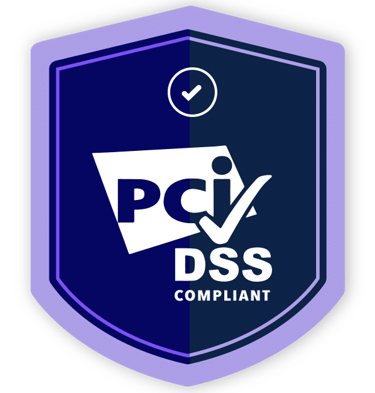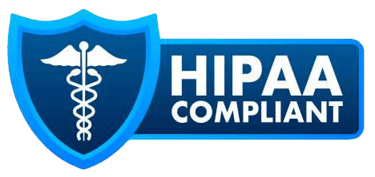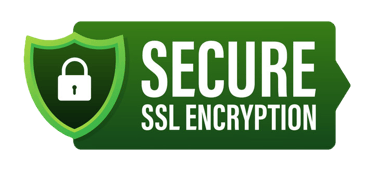Avoiding Hospice Claim Denials: Eligibility and Documentation Tips
Learn how to prevent hospice claim denials with strong eligibility documentation and compliance. Expert tips from HealthBridge’s Ongoing Compliance Program.
Hospice claim denials can disrupt cash flow, delay patient care, and draw the attention of Medicare auditors. For most providers, denied claims stem not from fraud—but from documentation gaps, incomplete certifications, or unclear eligibility narratives.
In today’s regulatory climate, where Targeted Probe and Educate (TPE) reviews and post-payment audits are increasing, hospice agencies must strengthen documentation processes to protect both their operations and patients.
This guide outlines the most common causes of claim denials, practical eligibility and documentation strategies, and how HealthBridge’s Ongoing Compliance Program helps agencies stay denial-free all year.
Why Claim Denials Happen in Hospice
Hospice billing is unique: every claim must tie directly to medical necessity, timely certification, and consistent clinical documentation. Denials typically result from three core issues:
Incomplete or delayed physician certification.
Inadequate documentation supporting terminal prognosis.
Inconsistent interdisciplinary notes that contradict hospice eligibility.
CMS and MACs (Medicare Administrative Contractors) such as NGS, Palmetto GBA, and CGS have all identified documentation quality as a top reason for hospice claim denials.
Top Denial Reasons — and How to Avoid Them
Below are the most frequent causes of denials, along with actionable prevention strategies.
1. Insufficient Eligibility Documentation
The Problem:
Hospice records lack detailed evidence that the patient has a life expectancy of six months or less. Narratives are often vague (“patient continues to decline”) or identical to prior periods.
How to Avoid It:
Write a clear, individualized narrative describing measurable decline (e.g., weight loss, PPS drop, increased symptom management needs).
Tie observations to time-based comparisons—“since last certification, the patient has…”
Include corroborating notes from nursing, social work, and therapy staff.
HealthBridge’s Solution:
The Ongoing Compliance Program provides narrative templates and physician training materials to ensure every certification meets CMS standards and survives medical review.
2. Missing or Late Physician Certifications
The Problem:
Claims are submitted before the certification or recertification is signed and dated by the physician or medical director.
How to Avoid It:
Establish a signature tracking log for all certifications.
Use electronic alerts for upcoming due dates (day 90 and every 60 days thereafter).
Never bill a claim until certification is completed and filed.
HealthBridge’s Solution:
HealthBridge’s compliance dashboard includes real-time signature tracking, ensuring no claim moves forward without complete certification documentation.
3. Conflicting Documentation Between Disciplines
The Problem:
Nursing notes describe significant decline, while aide or chaplain notes show “patient stable” or “improving.” Surveyors interpret this as ineligibility.
How to Avoid It:
Train staff to use consistent descriptors for functional status.
Conduct monthly interdisciplinary chart audits.
Review all IDT documentation for congruence before recertification.
HealthBridge’s Solution:
Through mock audits and interdisciplinary documentation reviews, HealthBridge identifies inconsistent language and helps agencies retrain staff before surveyors find it.
4. Lack of Documentation for Continuous or GIP Care
The Problem:
CMS denies claims for higher levels of care (General Inpatient, Continuous Home Care) if documentation does not justify medical necessity.
How to Avoid It:
Clearly document symptoms requiring acute management (e.g., uncontrolled pain, respiratory distress).
Record the interventions used and patient response.
Provide daily updates showing that GIP or CHC level remains appropriate.
HealthBridge’s Solution:
HealthBridge’s Ongoing Compliance Program offers level-of-care audit tools and daily checklist templates to ensure consistent and defensible documentation.
5. Invalid or Missing Election and Revocation Forms
The Problem:
Patient election statements or revocations are unsigned, incorrectly dated, or missing entirely.
How to Avoid It:
Audit all election packets for completeness before billing the admission.
Ensure signatures and effective dates are clear and consistent.
File revocation forms within 5 days of receipt and update the system immediately.
HealthBridge’s Solution:
The Ongoing Compliance Program includes standardized admission and discharge forms aligned with CMS requirements and state guidelines.
6. Missing or Late Face-to-Face Encounter (F2F) Documentation
The Problem:
The F2F encounter, required for the 3rd benefit period and beyond, is missing or completed outside the 30-day window.
How to Avoid It:
Schedule F2F visits as soon as recertification eligibility is reviewed.
Record the encounter date, clinician name, and summary of findings.
Keep a log of all F2F deadlines by patient.
HealthBridge’s Solution:
HealthBridge’s compliance alerts notify agencies of upcoming F2F due dates and provide templates to document encounter details properly.
7. Untimely or Missing Visit Documentation
The Problem:
Visit notes are not signed, dated, or uploaded within the required timeframe (often within 24–48 hours of visit).
How to Avoid It:
Implement a daily review of completed visits.
Monitor missing documentation reports from your EMR.
Encourage staff to chart at point-of-care whenever possible.
HealthBridge’s Solution:
With monthly clinical record audits, HealthBridge helps agencies catch missing or incomplete notes before claims submission.
8. Invalid or Expired Physician Narrative Templates
The Problem:
Using outdated narrative templates that don’t match current CMS guidance or lack individualized detail.
How to Avoid It:
Update templates annually or as CMS guidance changes.
Customize every narrative for the patient—avoid copy-paste.
Train certifying physicians on current documentation expectations.
HealthBridge’s Solution:
The Ongoing Compliance Program maintains up-to-date certification and narrative templates so agencies always use CMS-approved formats.
Building a Denial-Resistant Documentation System
Avoiding denials isn’t about luck—it’s about structure. Every agency should develop a repeatable system that integrates compliance, documentation, and billing.
1. Establish Clear Workflows
Define responsibilities for admission, documentation, verification, and billing. Create timelines for every step.
2. Conduct Monthly Internal Audits
Review random patient charts for eligibility documentation, visit timeliness, and missing certifications.
3. Educate the Entire Team
From nurses to medical directors, ensure everyone understands the financial and compliance implications of documentation.
4. Track Metrics
Monitor key indicators such as:
Claim denial rate (%)
Late certification rate (%)
Average days from visit to documentation submission
5. Perform Mock Billing Reviews
Simulate the billing process quarterly to ensure documentation completeness before claims submission.
How HealthBridge’s Ongoing Compliance Program Helps
HealthBridge developed the Ongoing Compliance Program to give hospices the structure and support needed to maintain claim integrity year-round.
The Program Includes:
Documentation and Billing Audits: Review every step from admission through billing.
Eligibility Support Tools: Real-time templates and physician narratives designed for compliance.
Mock Surveys & Chart Reviews: Identify deficiencies before auditors do.
Regulatory Alerts: Stay current with CMS and MAC changes.
Staff Education: Regular webinars and in-service materials on compliance best practices.
Result:
Hospices reduce claim denials, strengthen documentation quality, and remain compliant across all levels of operation.
Key Takeaways
Document why the patient qualifies for hospice at every stage.
Never submit a claim before all certifications and narratives are signed.
Ensure interdisciplinary consistency across notes.
Justify every level of care with clear, measurable documentation.
Perform regular audits—both internal and external—to identify gaps early.
Conclusion
Hospice claim denials are preventable with disciplined documentation and vigilant compliance systems. By integrating structured workflows, consistent training, and proactive auditing, agencies can safeguard both revenue and reputation.
Through HealthBridge’s Ongoing Compliance Program, providers gain access to the tools, templates, and expert oversight needed to maintain eligibility accuracy, billing compliance, and peace of mind—so your team can focus on what matters most: providing compassionate, high-quality end-of-life care.







